What are the benefits of coaching in the workplace? In an increasing number of organizations that are growing in maturity, coaching is becoming more common and plays a more significant role. In addition to formal coaching sessions conducted by professional coaches, whether external or internal, coaching can occur in various situations and be performed by people in different roles, such as:
- Managers
- People in senior positions, like Senior Engineers and Technical Leads
- Scrum Masters and Agile Coaches
- Mentors
- or in situations of peer-to-peer or peer-to-team coaching
Acquiring coaching competence becomes an important part of the leadership skillset, both for formal and informal leaders and brings many benefits for all sides of the coaching relations.
Telling vs. Coaching Leadership Styles
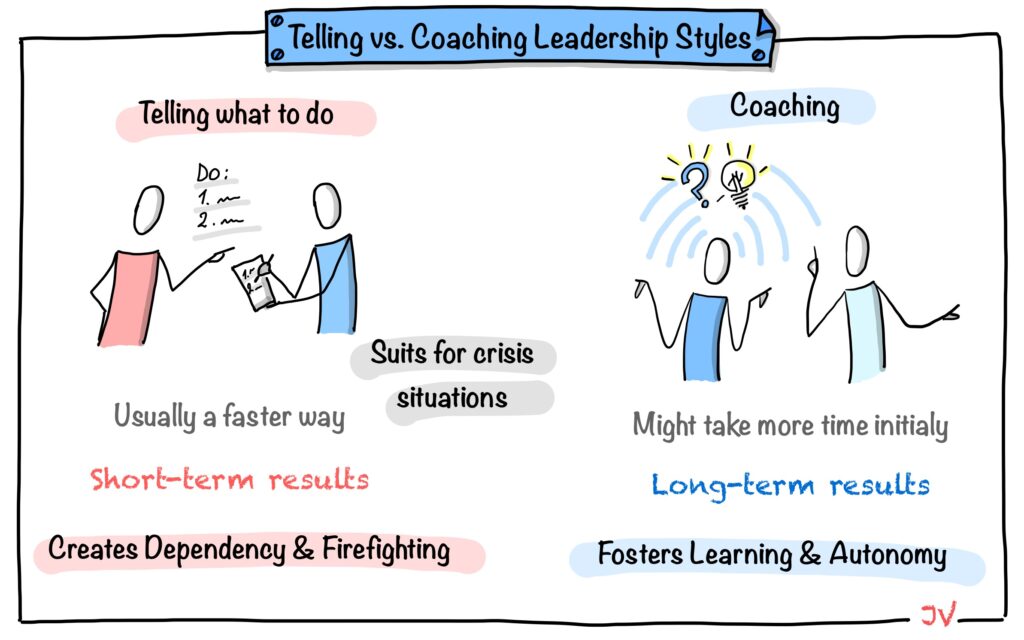
Telling people what to do is a habitual style of leadership. It is straightforward, fast and efficient. Things are consistently getting done.
However, it works well only in the short term. When something new and usual happens, new instructions are needed. It creates dependency and constant firefighting; the leader needs to be involved in an immense number of issues and tasks. No any chance nor time left for dealing with strategic work.
The coaching leadership style might seem to be less efficient.
In the beginning, leaders need to spend more time with their people, coaching them and helping them realize by themselves what is the best way to do their work, fostering their independence, creativity and problem-solving skills.
Its results become visible only in the longer term. The people become more autonomous, they learn and develop their leadership skills, they feel more empowered, and become better at doing their work.
And the leaders gain the possibility to focus on more strategic tasks.
The Leader as a Coach: the Benefits

The leadership coaching approach might seem slow and inefficient and require too much energy; it is much easier and faster to give exact instructions on what should be done and how. However, in the long run, the coaching approach will bring certain benefits for coaching leaders.
- Self-organized teams and people. With the coaching approach of the leader, teams and people learn to find their own solutions, relying on their own resourcefulness and creativity, believing in their ability to solve problems and get the work done. They will probably still make mistakes from time to time, which will also be a good learning opportunity.
- Long-term results. When leaders tell people what to do or suggest how to solve the problem better, it seems to be a fast and efficient way of operating. However, the next time their people face a challenging or non-trivial situation, they will again rely on their leader to help them solve it. With a coaching approach, teams and people become more self-organized, learn to tackle difficult situations, start believing in their ability to solve those difficult problems themselves, experience positive outcomes and feeling of achievement after doing so, and continue behaving like this in the future.
- As a result, leaders have Less work, more time for themselves, and the Possibility to focus on more strategic tasks – for which so many leaders just don’t have time, concentrating on more operational or fire-fighting issues.
- Leadership skills development – practicing coaching requires leaders to work on their emotional intelligence, empathy, integrity and balance, as well as on developing people, which are foundational leadership skills.
- The feeling of accomplishment – at some moment in our life, we have the urge to support others, help them grow, and give back. This is like a natural way of life – of “give and take” – first, we are children, receiving care of others, in “take” mode, then we enter young adulthood with somewhat equal portions of “give and take” in relations with our partners, and then we are becoming parents ourselves, entering into mostly “give” mode. The same way we go through our professional life – first, as youngsters, relying on the experience and mentorship of our more experienced colleagues, the “take” phase, then we equal with our peers, “give and take” and after we become mature, we mostly “give”, by mentoring and coaching.
When not to coach
However, there are, of course, situations when other approaches would be more effective than coaching, such as:
- Emergency – we need to act fast, and we don’t have time to coachee to figure out the solution themselves. (Unless the emergencies happen all the time and it is already some of a systemic issue)
- Lack of knowledge – it is difficult for the coachee to come up with a solution when they don’t have any idea about possible options. Coaching can still help, but it might be too slow. In this case, Teaching or Mentoring approach might work better.
- We know exactly what we want the other person to do – and we need just to say them this directly, not trying to “guide” them (or rather manipulate) to “the right answer”
Benefits for Coachee
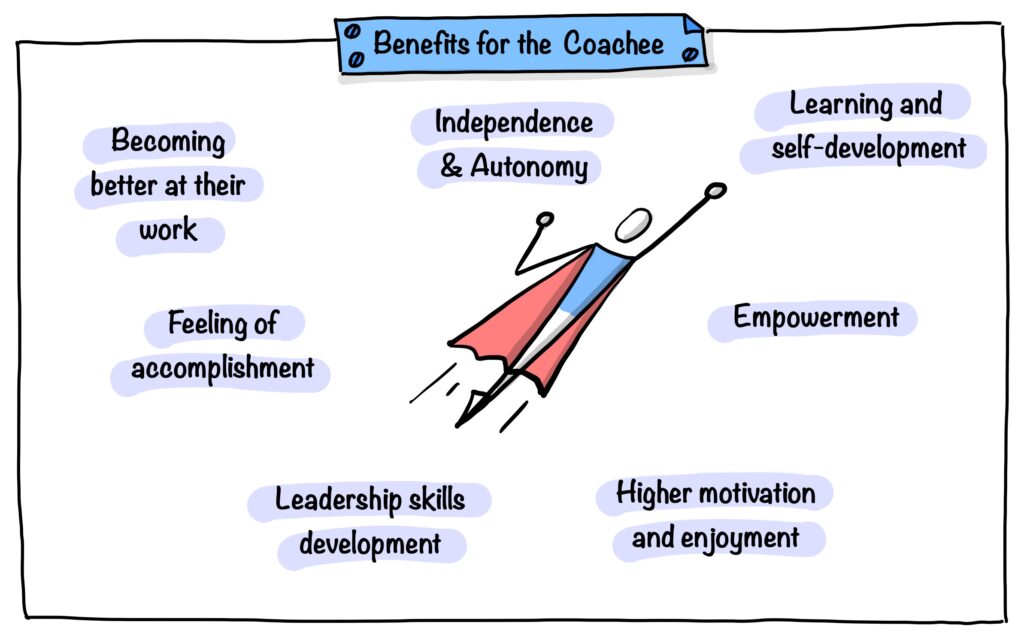
Lucky are those who have the luxury of having a manager or mentor with a coaching leadership style from the very early stages of their career. It provides an enormous boost for their professional development, teaches them to find the solutions themselves, thus constantly training their leadership muscle, helps them to become independent and autonomous at their work, and as a result to feel more empowered and accomplished and enjoy their work.
Benefits for Organization

The benefits are profound when the coaching culture becomes commonplace all over an organization. The creativity and resourcefulness at all levels of the organization, triggered by coaching, not only lead to the company’s resilience in the face of the changes but even to the capability to thrive in those changing environments, providing a competitive edge.
Situations for Coaching
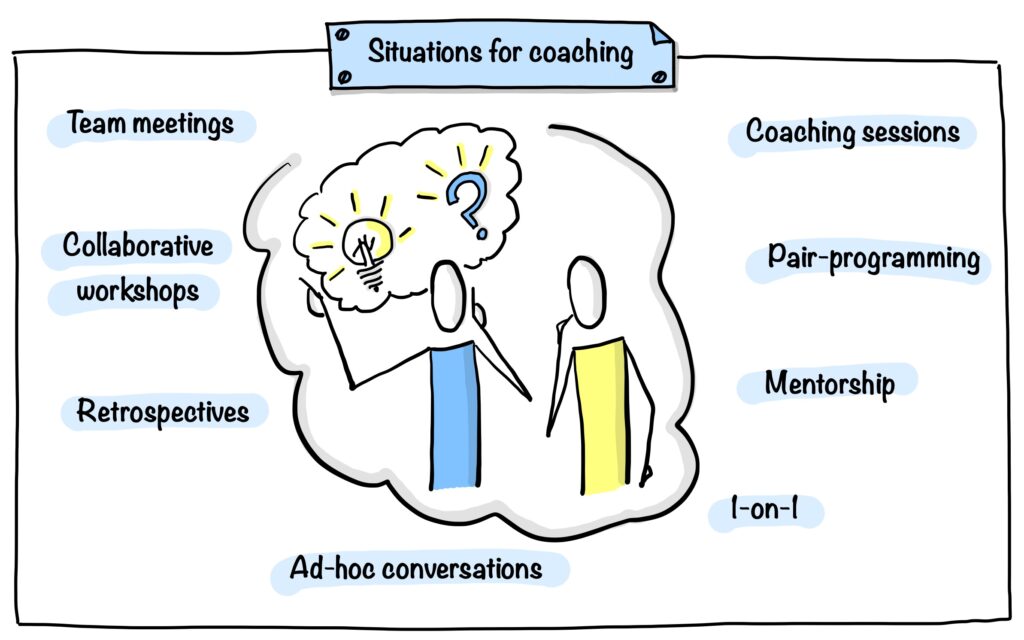
Formal coaching sessions are just one of many possibilities for coaching situations in the workplace. We can practice coaching individually, for example:
- in ad-hoc conversations
- at 1-on-1 sessions
- in mentoring relationships
- or even during pair-programming sessions to help a less experienced colleague to come up with the solution themselves
or whole team coaching during:
- meetings
- workshops
- retrospectives
Basics Rules of Coaching in the Workplace
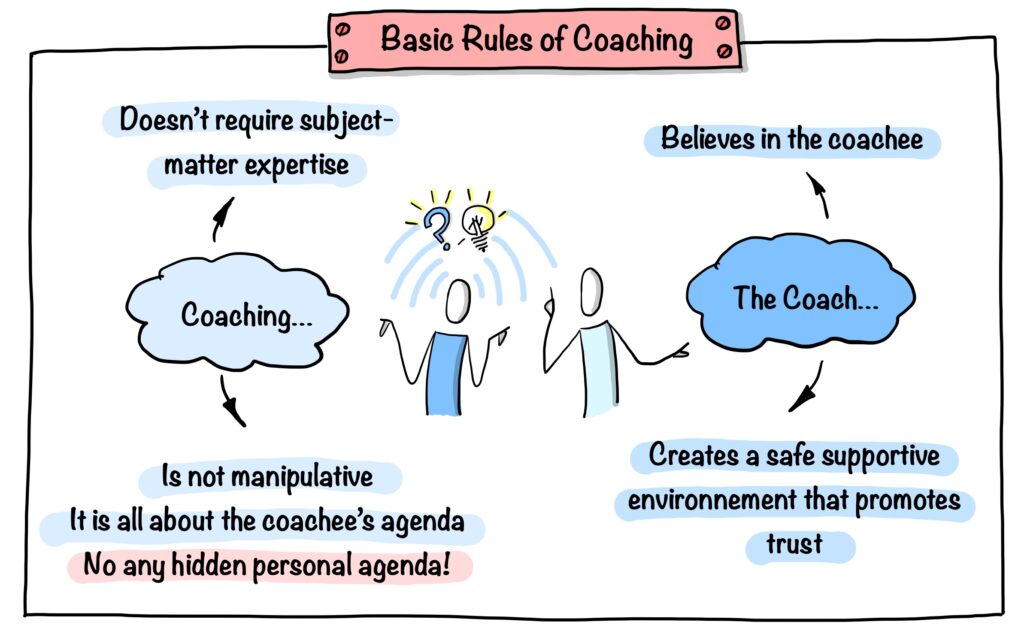
It is not manipulative. Coaching is not the way to make the coachee come up with what we think is the right solution. We might have an idea of what would be the best outcome of the coaching session, but if they come up with something else, then that is it. We can not just throw on our solution after all that so-called “coaching conversation.” If we know what we want them to do, we just need to say it directly. They might get to this point themselves, and then it will be a great result, but if not, and we will eventually tell them what they should do, it will be heavily detrimental to trust.
The coach believes in the coachee and in their ability to find a good solution. If we don’t think they are able to figure out what to do, then most probably, they won’t. At least with us. We won’t be able to be really curious and ask questions sincerely. And it does not mean that there is something wrong with us – maybe the coachee lacks experience and knowledge and needs training or mentoring rather than coaching — or just direct instructions on what and how to do.
Trust is a cornerstone of coaching. First, we need to build trustful relations, and only after that might we have a chance to coach. And if we are not always genuine afterward, the trust can be ruined very fast and forever.
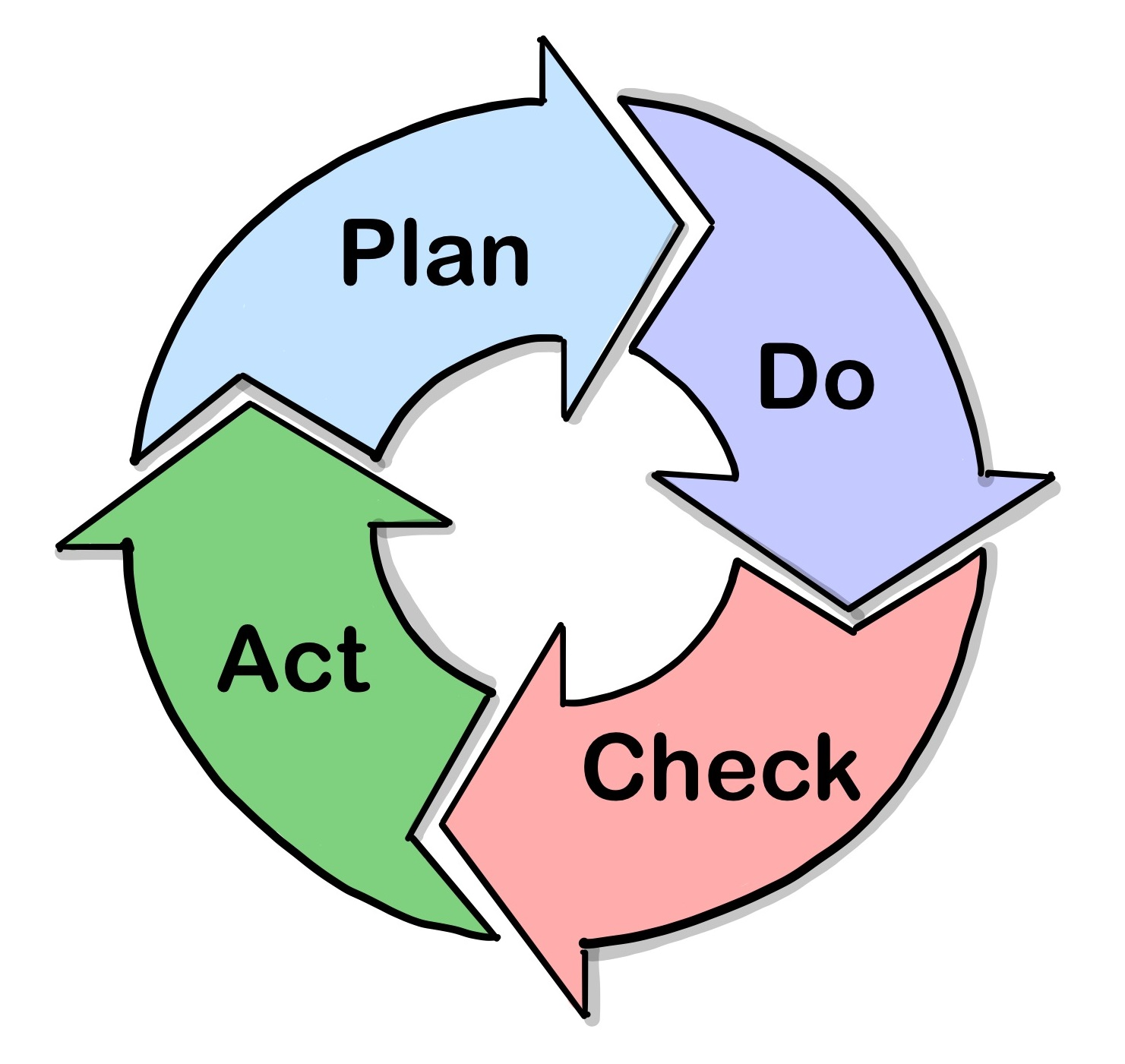
Leave a Reply